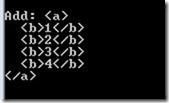I read a blog post:http://blog.recursivity.com/post/9204470867/the-problem-with-the-scala-community that triggered me to write this post.
I do not know the Scala community so I can not agree or disagree with the conclusion:
“I love the Scala community and the eco-system around the language, but quite frankly, to foster the continued growth of the community, we need to call out the small minority of bullies on their bullshit whenever it occurs: being able to confuse and intellectually intimidate newbies to the language and community is not proving your supposed “intellectual superiority”, it is merely a reflection of an insecure ego and social incompetence.”
I do think that as a person we can not know everything of everything and even if we could one moment in time the world will change and we have to learn the new thing.
So we have two option: stick with what we know or accept the newbie feeling.
When you are a newbie you will make mistakes. My grant parents had the following text on a tile:”The only man who never makes mistakes is the man who never does anything.” I just found out it is a quote from Theodore Roosevelt (thanks Google).
So if we want to progress we have to accept the newbie feeling, accept the insecurity and make mistakes.
When we want to progress we have several options, one option is to learn it all by yourself, another is to accept the support of the community.
The community can support you in two ways:
- one is provide knowledge
- the other to provide mentorship
I think a programming language community is able to provide knowledge, that is nature of the community. To provide mentorship is something else and it is very hard to provide it on line.
So as a newbie look for knowledge on line and find mentorship somewhere else.




